The shaggy scalycap (Pholiota squarrosa) is widely distributed across North America, and its propensity to grow in enormous, spreading clusters makes it easy to spot. It appears at the same time as many honey mushroom species and is easily (and commonly) mistaken for this popular edible mushroom. The shaggy scalycap is said to be edible, but there are reports of poisonings as well, so we don’t recommend it.
When you’re foraging honey mushrooms, it is essential to know the shaggy scalycap and other Pholiota species to avoid misidentifications. These fungi appear from late summer through fall in North America. The mushroom’s ecological role is both as a tree parasite and a vital food source for red squirrels.
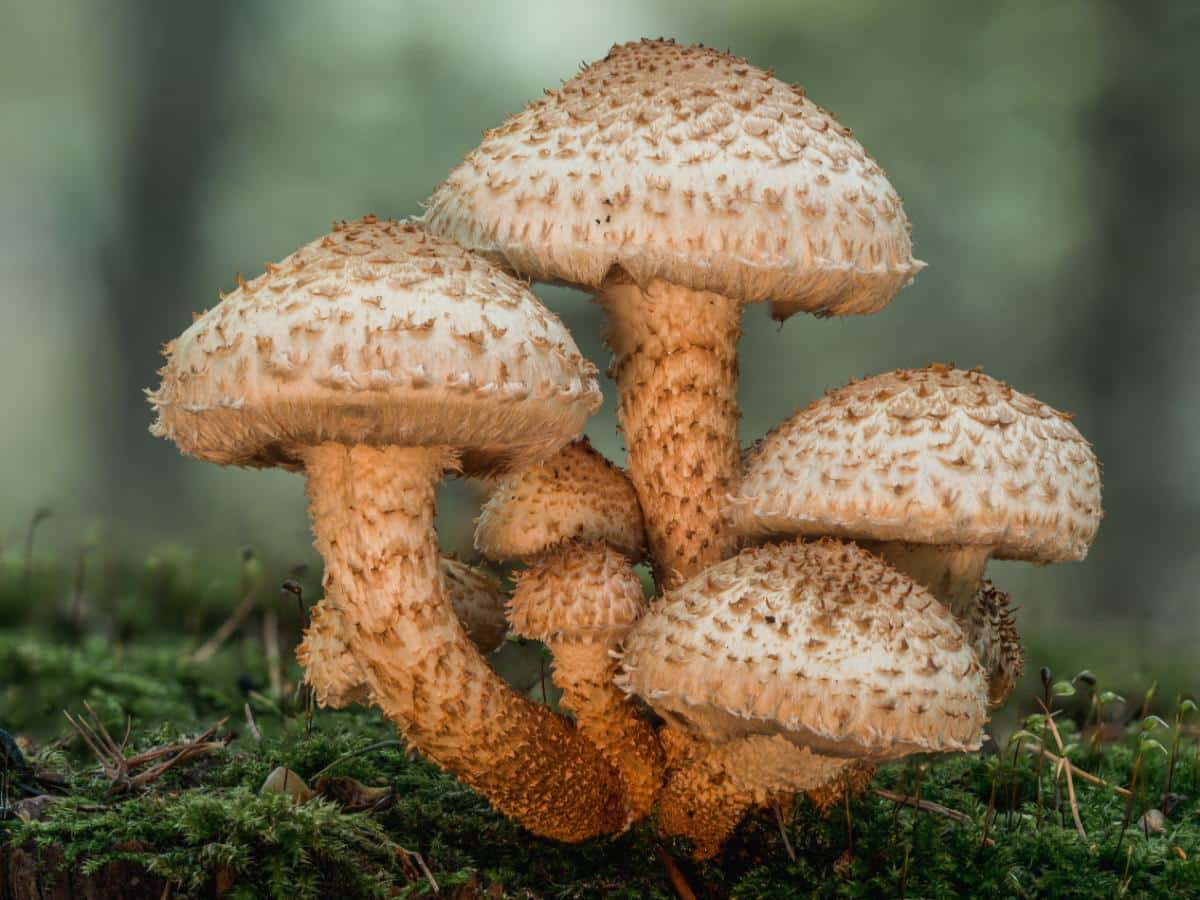
Jump to:
All About Shaggy Scalycap Mushrooms
The shaggy scalycap or scaly pholiota belongs to the family Strophariaceae. This mushroom has a unique, scaly look. It often grows in clusters at the base of deciduous trees, especially hardwoods like oak and beech. This type of mushroom is important for the forest ecosystem because it helps break down dead wood and recycle nutrients.
The most striking feature is the dense covering of yellowish-brown scales that give it a shaggy appearance. These scales are particularly prominent and upturned, especially towards the center of the cap. The shaggy scalycap has a strong, distinctive odor that is often described as radish or garlic-like or somewhat unpleasant. While it is considered edible by some, it’s not recommended for consumption due to its bitter taste and potential to cause gastric upset in some individuals.
This species was first documented in 1771 as Agaricus squarrosus. The term “pholis-” translates to “scale,” which refers to the scaly caps commonly found on numerous species within this genus. The name “squarros-” describes a characteristic of having “upright scales, a rough texture, or a scurfy appearance” (also known as squarrose). This part of the name refers to the notable scales present on these mushrooms.
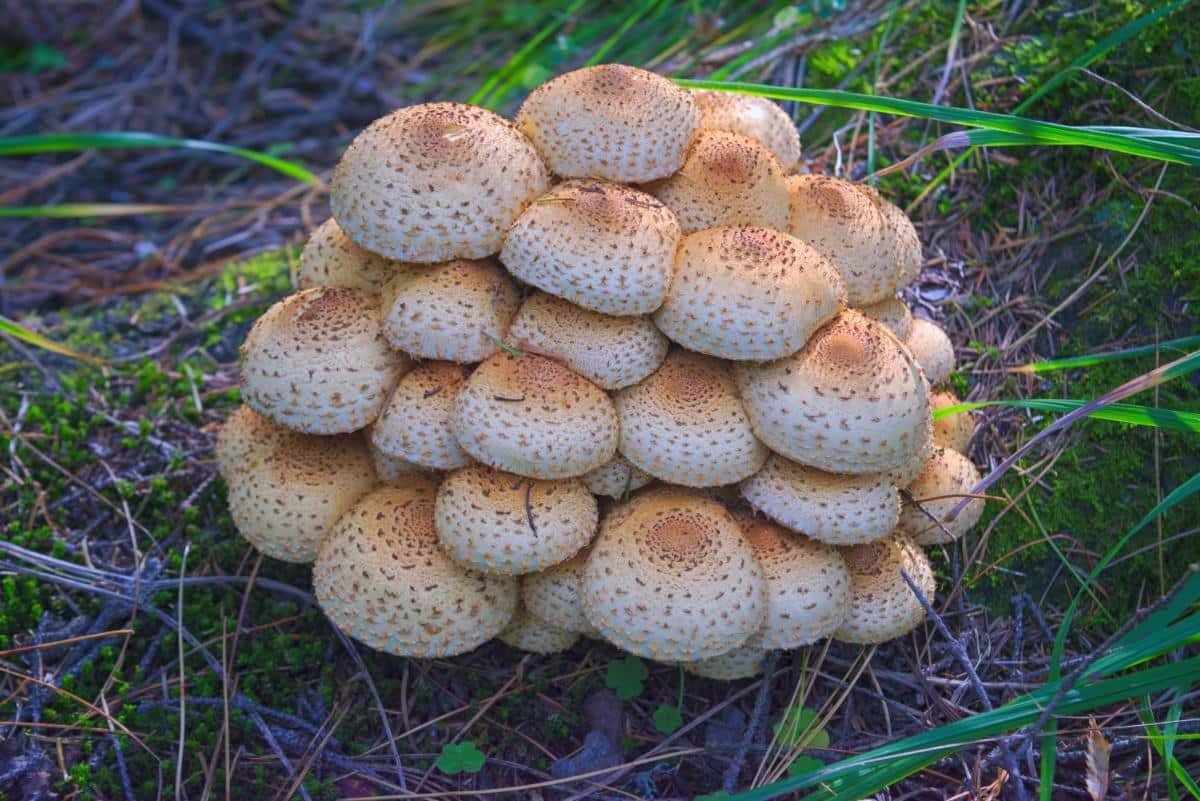
Shaggy Scalycap Mushroom Identification
Season
These mushrooms appear from August through November.
Habitat
Shaggy scalycaps grow at the base of both living and dead trees. They prefer hardwoods, especially beech trees, but sometimes pop up on conifers, too.
Pholiota squarrosa is a saprobic and parasitic fungus, meaning it derives its nutrients from decaying or living organic matter. The mycelium (the vegetative part of the fungus) colonizes the wood substrate, often extending several inches into the tree’s heartwood or roots. The most common host trees include oak, beech, maple, elm, and poplar.
This mushroom species often appears in dense clusters or tufts. These clusters can be quite substantial, sometimes reaching up to 12 inches (30.48 cm) in diameter. Individual fruiting bodies within the cluster typically have caps measuring between 1.5 to 4 inches (3.81 to 10.16 cm) across.
Fruiting bodies emerge from the soil or directly from the wood, usually within a radius of 3 to 24 inches (7.62 to 60.96 cm) from the tree trunk. They can appear to be growing directly from the ground when, in fact, they are connected to buried roots or stumps.
This species is found in heavily forested woods, as well as in urban or suburban settings. As long as there are trees around, this species can show up. The dense clusters can often be spotted in parks, gardens, or along tree-lined streets where suitable host trees are present, and conditions mimic its natural woodland habitat.
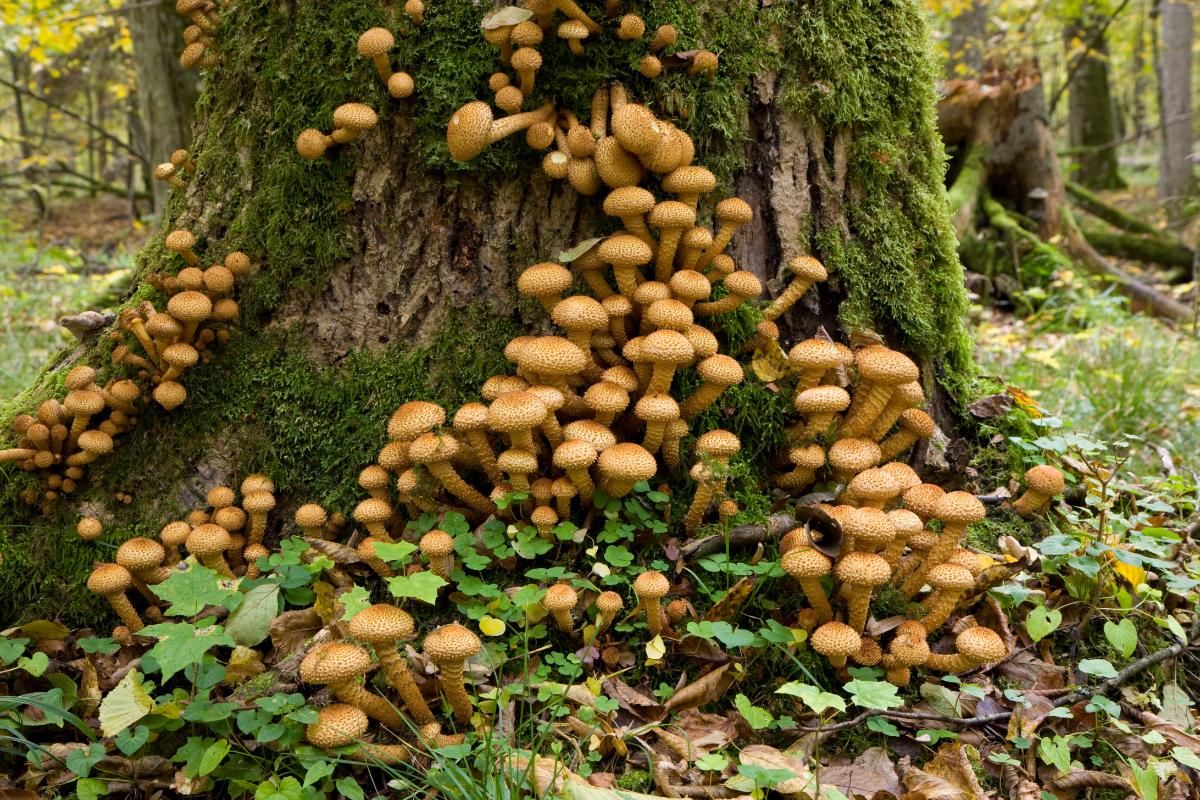
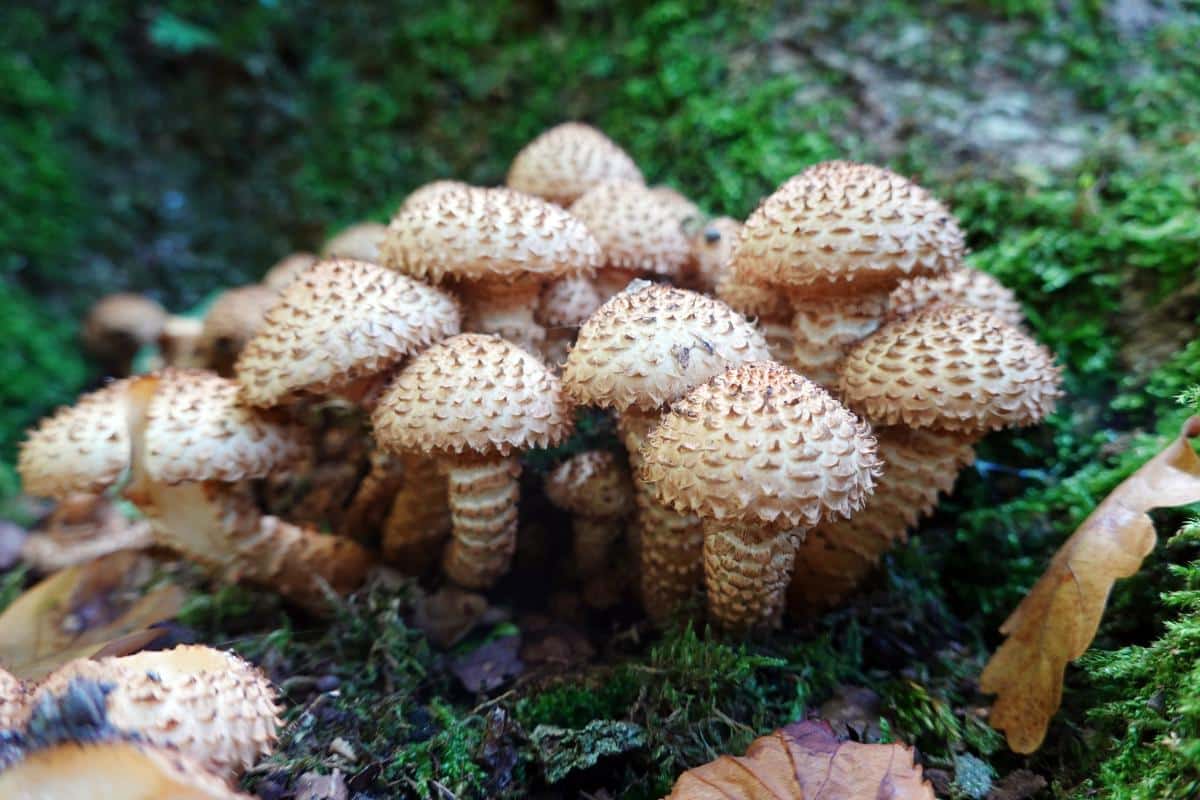
Identification
Cap
The cap of the shaggy scalycap mushroom typically measures between 1.5 to 4 inches (3.8 to 10.2 cm) in diameter. The cap starts out rounded but flattens as it ages. There is often a slightly rounded or upraised center that looks like a bump. The color of the cap ranges from pale yellow to a rich golden brown. Sometimes, there are darker hues towards the center.
The surface is covered with numerous small, pointed scales that are arranged in a shingle-like circular radiating pattern. These scales are typically darker than the underlying cap color, often appearing brown or reddish-brown. They are more concentrated towards the center of the cap and become sparser towards the edges.
The texture of the cap is dry and somewhat rough due to the scales. The margin (edge) of the cap is often slightly curved under when young. It flattens or even slightly upturns as the mushroom ages. The cap might be slightly sticky or tacky to the touch in moist conditions.
The cap may develop cracks or fissures as the mushroom matures, especially during dry periods. This can give older specimens a more rugged appearance.
Gills
The gills of the shaggy scalycap are adnate to slightly decurrent, meaning they are attached to the stem and may run very slightly down it. The gills are densely packed, and the gill edges are smooth and even, without any notable serrations or irregularities.
When young, the gills are pale yellowish, cream, or buff-colored. As the mushroom matures, the gills darken yellowish green and then to a rusty brown or cinnamon color. The gills have a slightly waxy feel when touched, which is more noticeable in fresh specimens. This texture, combined with their close spacing, gives the underside of the cap a somewhat compact and fleshy appearance.
When the mushroom is very young, the gills are covered by a partial veil. As the mushroom grows, the veil breaks apart to show the gills. Sometimes, remnants of the partial veil hang from the gills or cap edges. The partial veil leaves a distinctive ring around the upper portion of the stem — many times, this is the only proof that it existed at all.
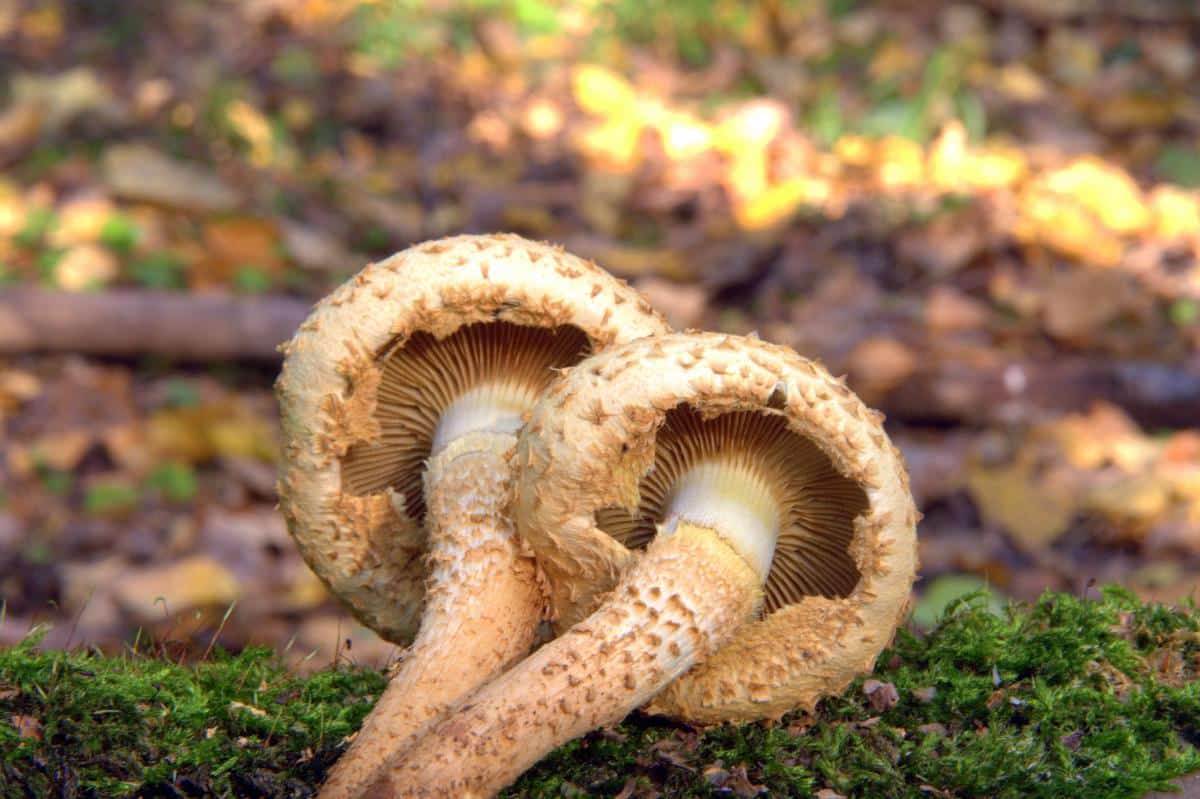
Stem
The stem of the shaggy scalycap measures between 2 to 6 inches (5 to 15 cm) in length. It is robust, sturdy, and thick. One of the most striking features of the stem is its scaly texture. The entire length of the stem is covered with numerous small, recurved scales that point downwards. These scales are typically brown to rusty-brown in color, contrasting against the paler background of the stem. The scales give the stem a rough, shaggy appearance, which contributes to the mushroom’s common name.
The upper portion of the stem, just below the cap, has a distinct ring or annulus. This ring is a remnant of the partial veil that covers the gills of the young mushroom. As the mushroom matures and the cap expands, this veil tears, leaving behind the ring on the stem. The ring is usually the same color as the scales and can be quite prominent in young specimens.
The base of the stem is typically slightly swollen or bulbous. This thickened base is often embedded in the substrate, which can be buried wood or tree roots. The flesh of the stem is solid and fibrous.
Flesh and Staining
The flesh of shaggy scalycap mushrooms is whitish to yellowish throughout and does not change color when cut or bruised. This mushroom’s flesh is dense and compact.
Odor and Taste
The smell of this mushroom varies widely depending on who is smelling it. Some specimens either don’t have a smell, don’t have a distinctive smell, or the person sniffing it can’t pick up it. (this forager has held a very garlicky-smelling specimen up for someone else to smell, and they couldn’t smell it!). The most common descriptions are strongly of garlic, onions, something foul, or radishes. Other smells described include skunky and lemony.
If the specimen you find smells strongly, it is an excellent identifying feature, especially if you’re trying to differentiate them from honey mushrooms (which definitely do not smell like garlic or onions). However, a non-smelly one is possible, so this feature cannot be used definitively for identification.
Spore Print
The spores are cinnamon to rusty brown print.
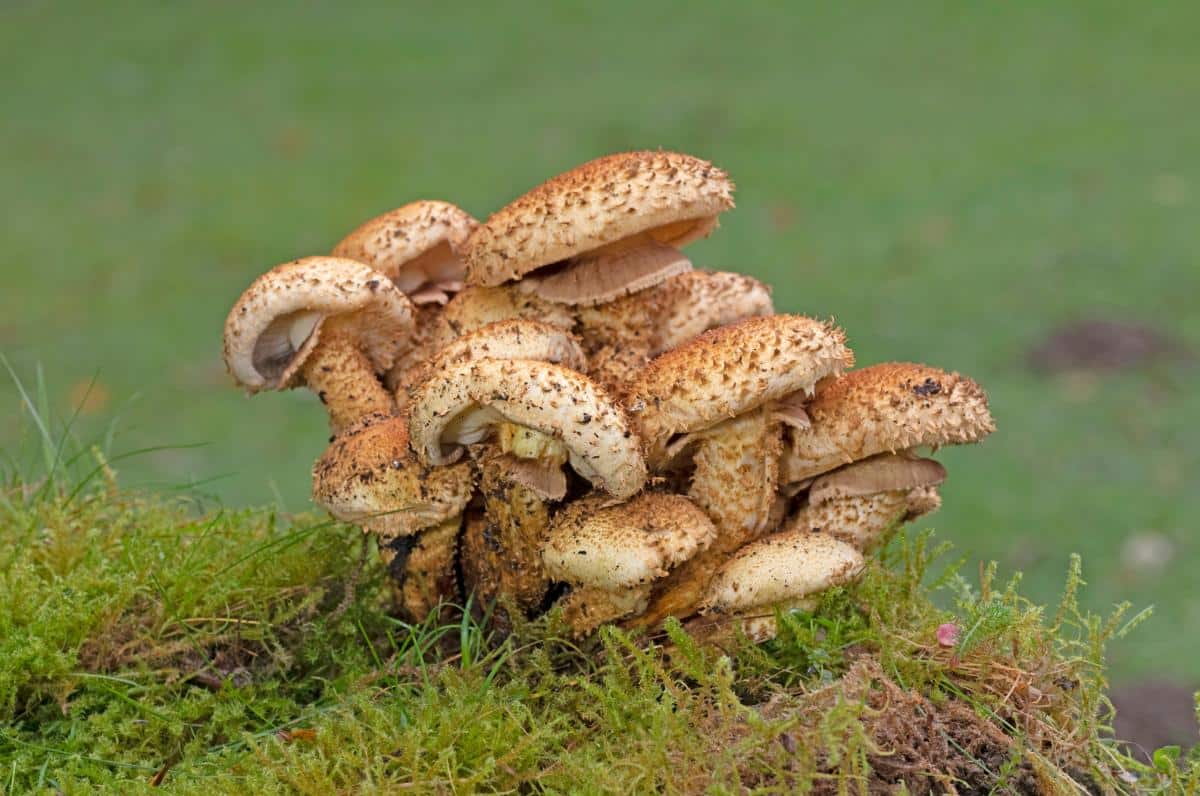
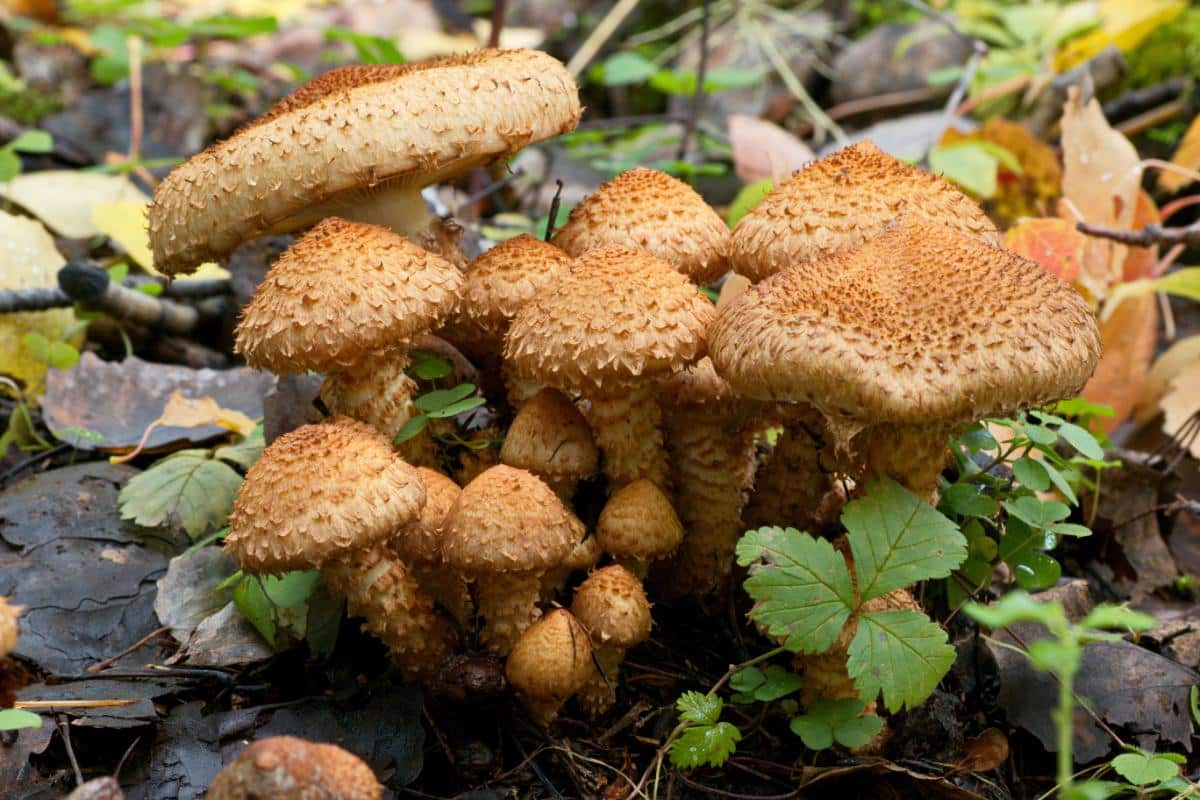
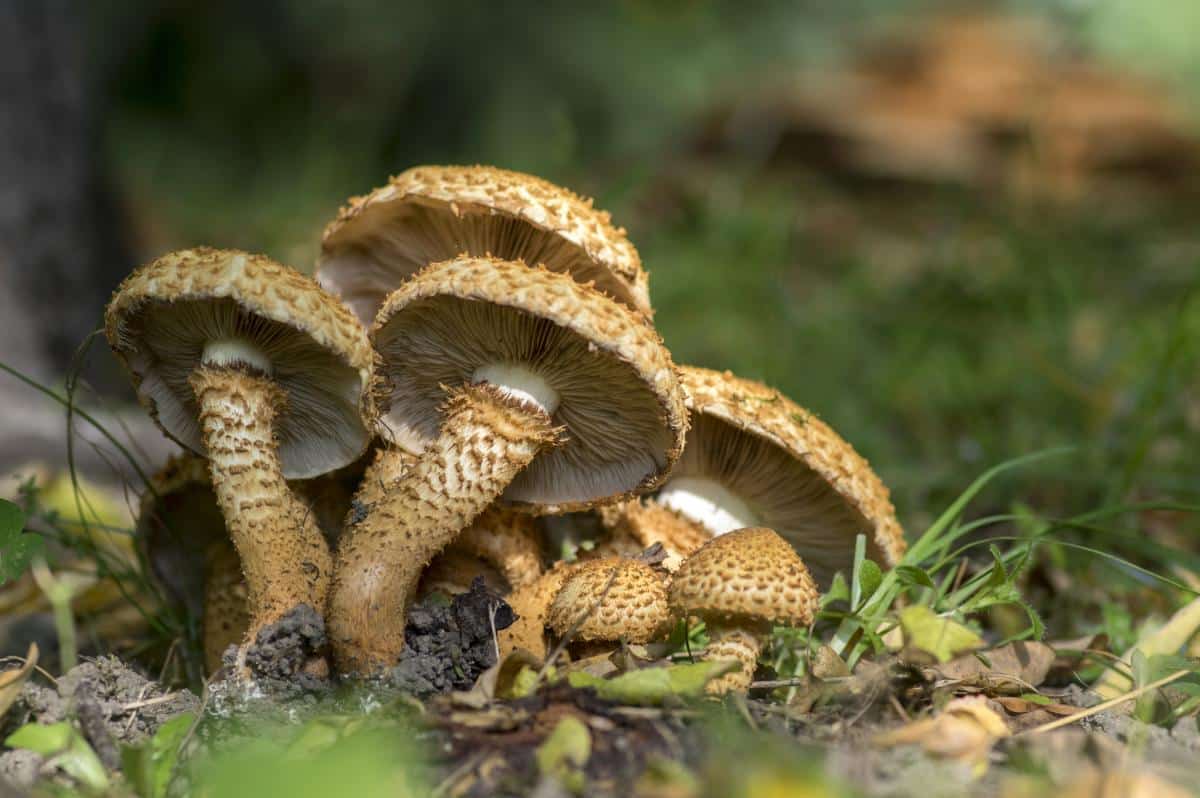
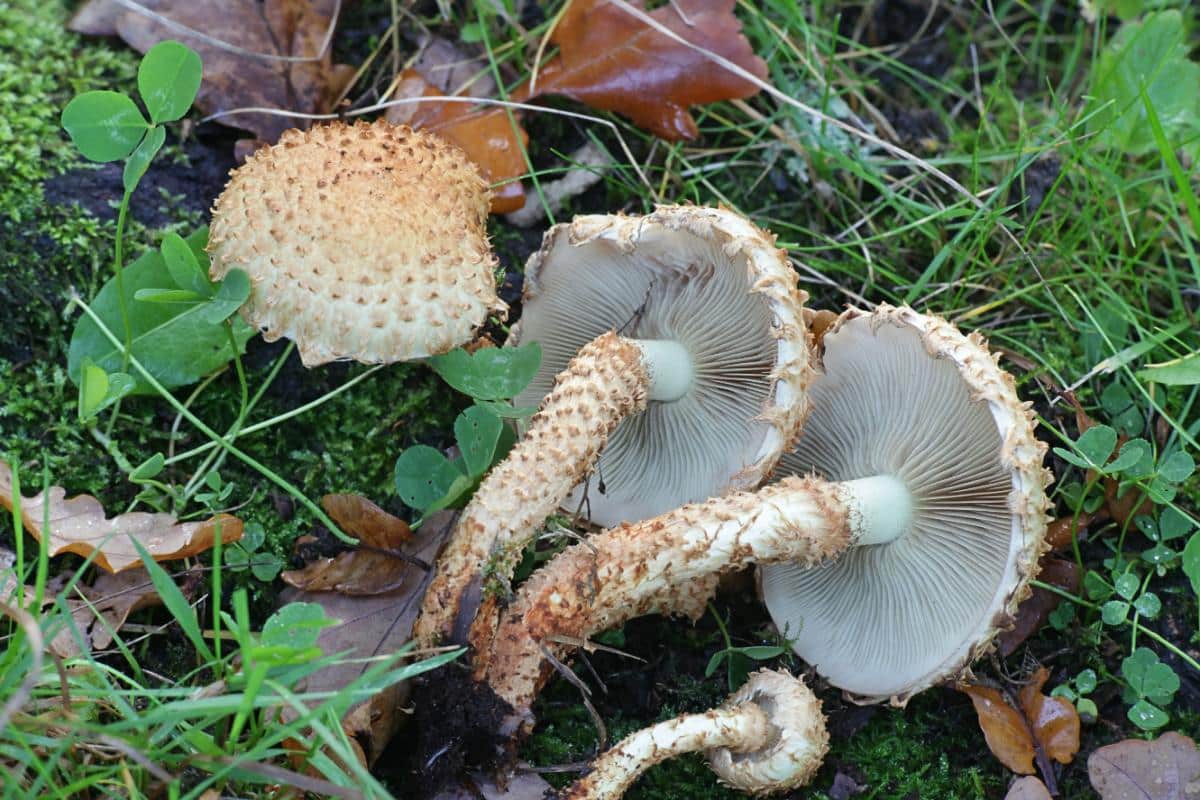
Shaggy Scalycap Mushrooms Lookalikes
Pholiota squarrosoides
This species is very similar to the shaggy scalycap, making it difficult to distinguish them without using microscopic analysis. The main differences are that P.squarrosoides has a slightly sticky cap and a pleasant smell, unlike the shaggy scalycap which can smell like garlic or something unpleasant. However, the stickiness of the cap can change due to weather conditions, so it’s not always a reliable distinguishing feature.
Additionally, the shaggy scalycap doesn’t always have a strong smell, further complicating identification. The scales on P. squarrosoides are reddish brown and usually less pronounced than those on the shaggy scalycap, but this can also vary. Apart from these differences, both species grow in large clusters on hardwood trees and are found throughout North America.
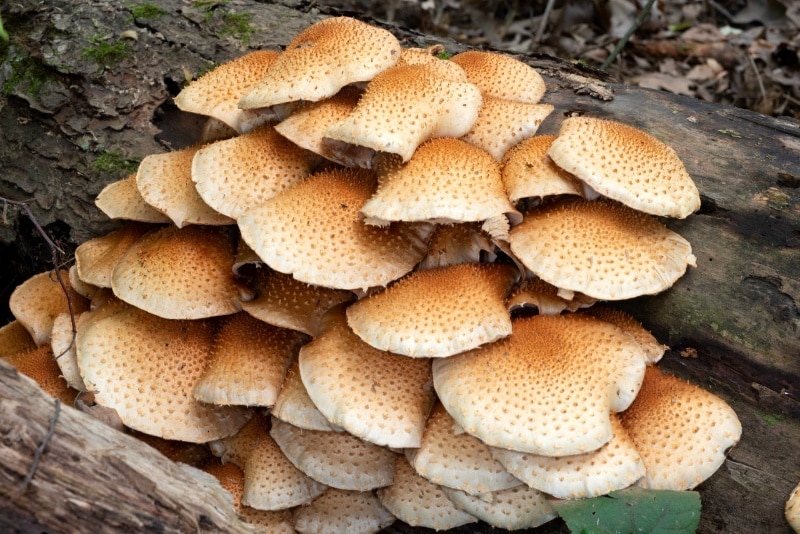
Pholiota squarrosoides by Dr. Lorne Stobbs on Mushroom Observer
Decorated Pholiota (Leucopholiota decorosa)
Despite its appearance, this fungus is not a true Pholiota species, though its common name might suggest otherwise. The genus name Leucopholiota, meaning “white Pholiota,” refers to its white gills and spores, contrasting with the brown ones found in genuine Pholiota species.
Leucopholiota decorosa is smaller, with caps typically spanning 1-3 inches in diameter. The cap is rounded, often featuring a slight raised center (umbo). It has delicate, brown to rusty-brown scales or hairs adorning the cap, which inspired its species name “decorosa,” meaning decorative.
The overall coloration of Leucopholiota decorosa ranges from whitish to pale yellow, with the scales slightly darker than the underlying cap. The gills of this species are white and attached to the stem with a small notch. The stem, usually 1.5-3 inches long, is covered with fine fibrous scales or hairs similar to those on the cap.
A key identifying characteristic of Leucopholiota decorosa is its white spore print. This fungus primarily grows on decaying hardwood and is often found on fallen logs or stumps. It has a more limited distribution compared to the shaggy scalycap and is most frequently encountered in eastern North America.
Summary: Leucopholiota decorosa and Pholiota squarrosa share some superficial similarities in their scaly appearance, but closer inspection easily sets them apart. The decorated Pholiota is smaller and lighter colored with paler, usually less-distinctive scales on the cap and stem. It also has white gills.
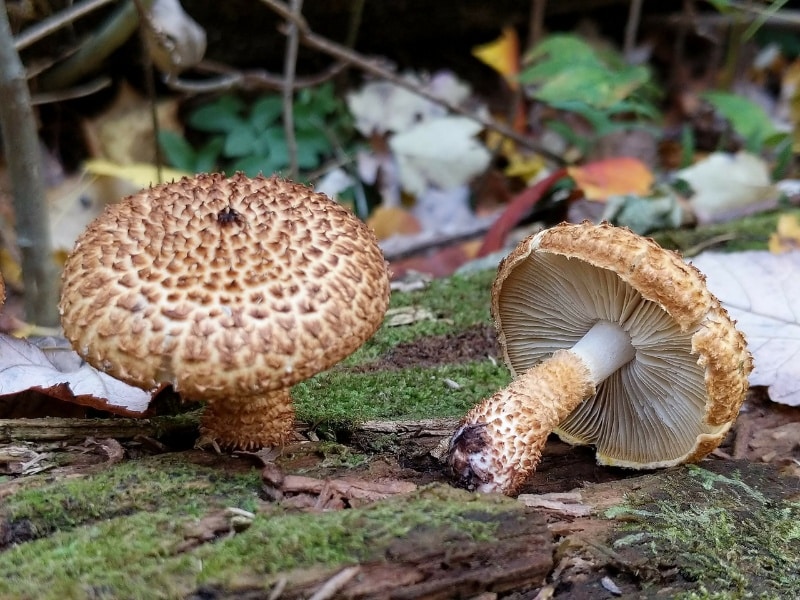
Leucopholiota decorosa by Crystal on Mushroom Observer
Honey Mushrooms (Armillaria mellea)
Armillaria mellea and Pholiota squarrosa are both wood-decaying fungi that can be found growing on trees. They both form large, dense clusters that often cover an entire tree. While they share some similarities, these two species have several key differences.
Armillaria mellea typically has a honey-colored cap that ranges from 2 to 6 inches in diameter. Its surface is usually smooth or slightly scaly and is rounded when young. It flattens out with age. The gills are white and might turn pinkish-yellow with age. The honey mushroom has a slender stem, typically 2 to 8 inches tall, and has a prominent ring or collar near the top. The surface of the stem is covered lightly in gray fibers. The spore print is white. Honey mushrooms never smell like garlic, onions, or radishes.
Summary: The shaggy scalycap has a more yellowish-brown cap that is densely covered with coarse, brown scales, giving it a much rougher appearance than the relatively smooth honey mushroom. The honey mushroom may have fibers over the cap, but they are thin and flat compared to the shaggy scalycap.
The stem of the shaggy scalycap is also different. It is covered with coarse scales or dense tufts below the ring, matching the scaly appearance of its cap. In contrast, honey mushroom stems are covered in thin fibers, not dense, jagged scales. Honey mushrooms also never have the strong smell of the shaggy scalycap.
If there is ever doubt, do a spore print. Honey mushrooms have white spore prints, while Pholiota species have brown spore sprints.
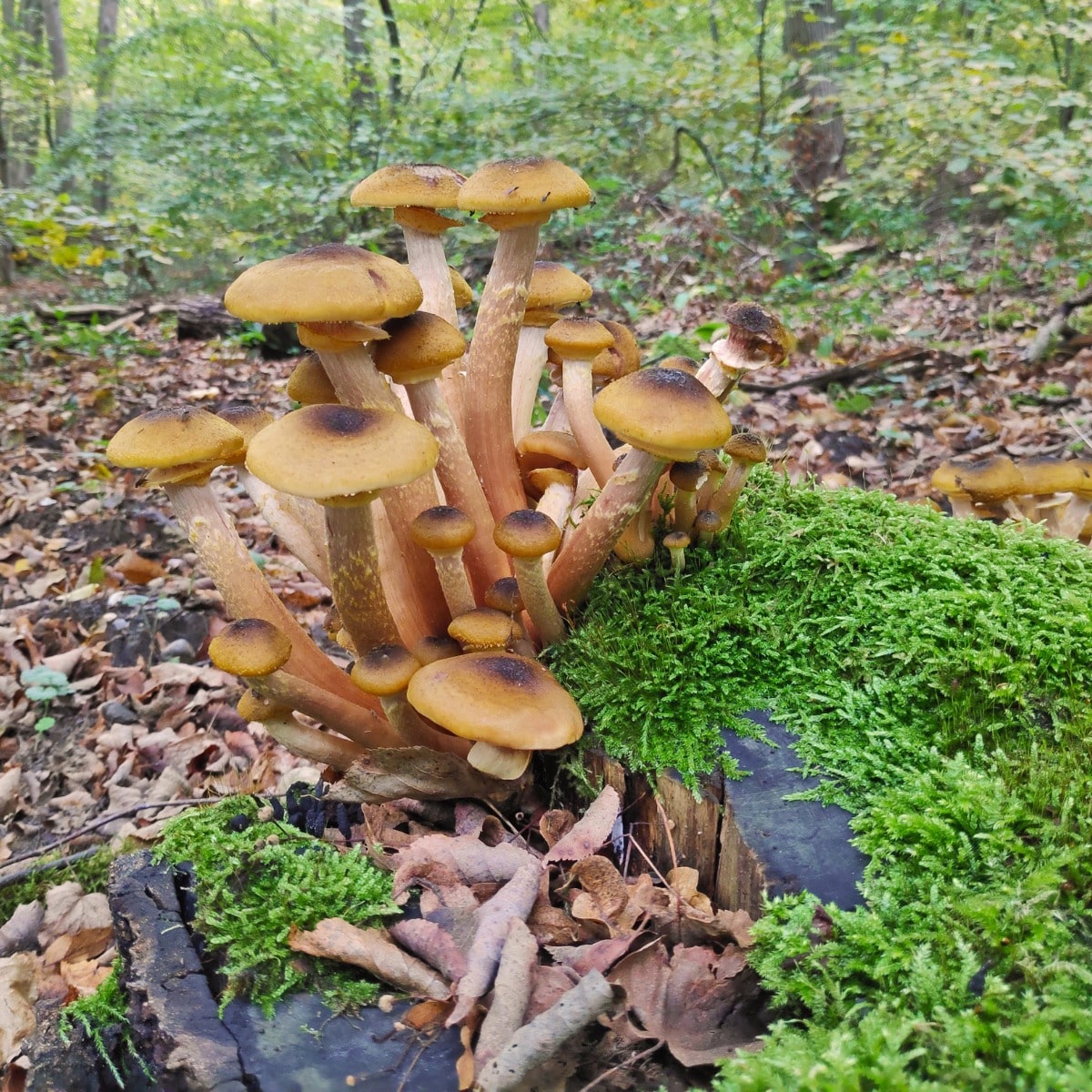
Other Pholiota Species
Several other Pholiota species resemble the shaggy scalycap, though most of them aren’t quite as shaggy all the way around. For comparison against other common Pholiota species, check out this guide: Pholiota Mushrooms of North America
Pholiota Mushroom Medicinal Uses
This species contains high levels of phenylpropanoids that inhibit enzymes causing gout and joint pain. Research teams found that PhoSL, a lectin extracted from Pholiota species, has promising antiviral properties. This compound helps stop Hepatitis B virus infection without harming cells. PhoSL can bind to specific sugar molecules, which suggests it could be effective against SARS-CoV-2 variants. Lab tests show that shaggy scalycap extracts are powerful antioxidants. The mushroom is more effective against fungi than bacteria, but it still works against bacterial strains like Bacillus subtilis, E. coli, and Staphylococcus aureus. Current studies aim to reduce side effects and enhance its therapeutic properties through protein engineering.
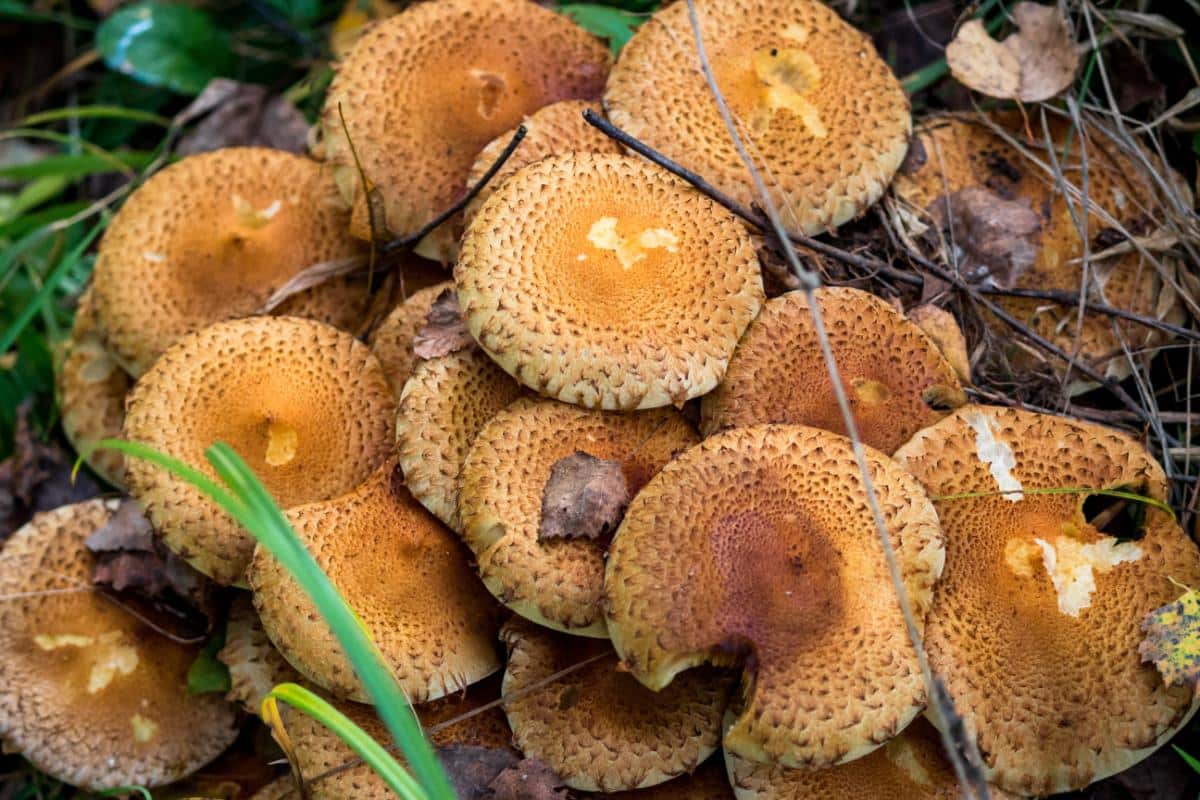
Shaggy Scalycap Edibility
The perception of shaggy scalycap’s edibility has changed over time. People once thought it was a good, edible mushroom variety, but now experts have safety concerns.
Several poisoning cases have been documented. People suffered severe symptoms after eating these mushrooms, especially when they had alcohol. The symptoms show up about ten hours after eating them and include vomiting and diarrhea.
Today, mycologists recommend avoiding shaggy scaly caps completely. While some Pholiota species, like the chestnut mushroom, are safe to eat when cultivated, wild shaggy scalycaps remain questionable. The long gap between eating and getting sick points to a different type of toxicity than the antabuse effect (toxins activated with the consumption of alcohol, like with inky caps) found in other mushroom species.
The mushroom smells like radishes or garlic and has a bitter taste, which limits its use in cooking. These mushrooms grow in large amounts and can be quite big, but their safety is unclear. Their bitter taste and possible toxic reactions make them a bad choice for eating.
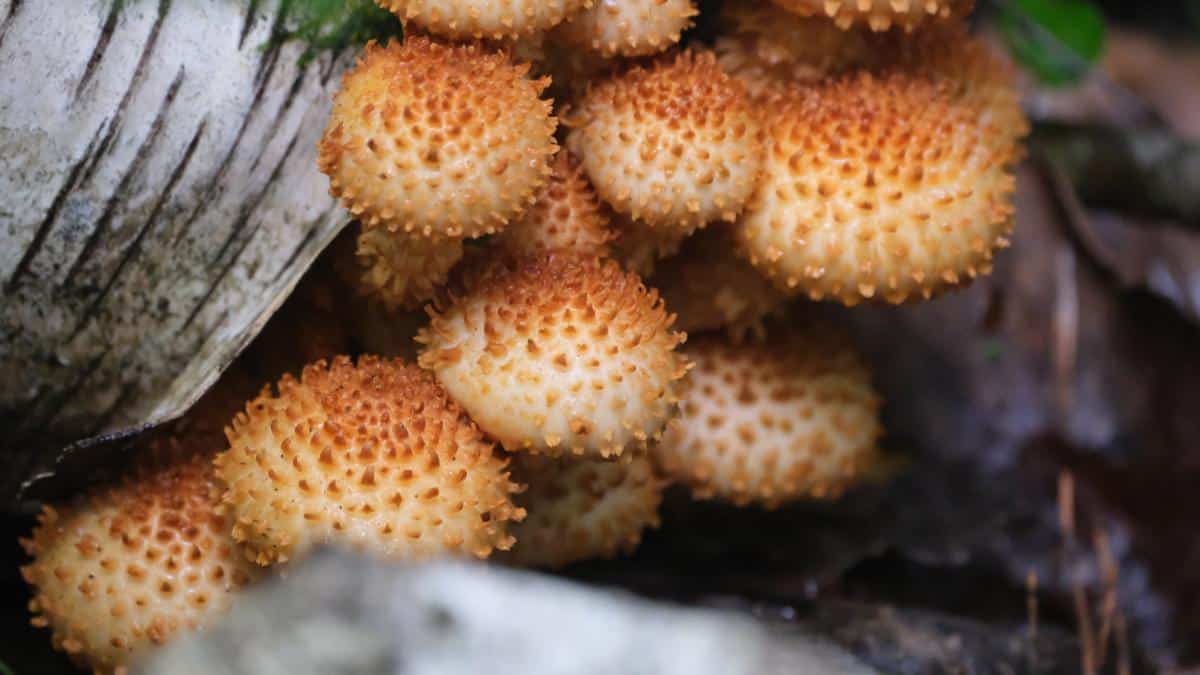
Common Questions About The Shaggy Scalycap Mushroom
Is the shaggy scalycap mushroom safe to eat?
The shaggy scalycap mushroom is not safe to eat. It has caused poisoning and can lead to symptoms like vomiting and diarrhea, especially when consumed with alcohol. Most mushroom experts advise against eating this mushroom because of its possible toxicity and bitter taste.
What are the medicinal properties of shaggy scalycap?
Recent research has shown that shaggy scalycaps contain compounds with potential medicinal benefits. It has antioxidant properties and may help inhibit enzymes causing gout and joint pain. A lectin extracted from Pholiota species, called PhoSL, shows promise in antiviral applications, particularly against Hepatitis B and potentially SARS-CoV-2 variants.
How does the shaggy scalycap differ from honey fungus?
While they may look similar, shaggy scalycap and honey fungus can be distinguished by their spore prints. Shaggy scalycap produces brown spores, while honey fungus has white spores. Additionally, the honey fungus has less pronounced scales that don’t extend down the stem, which is different from the shaggy scalycap.
When and where can I find shaggy scalycap mushrooms?
Shaggy scalycap mushrooms typically appear from August through November, during late summer and fall. You can often find them at the base of living or dead trees. They prefer hardwood trees, especially beech trees.

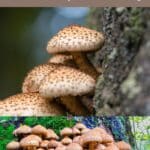
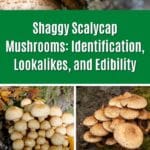
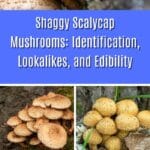
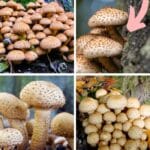

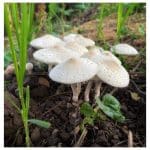
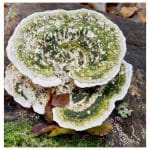
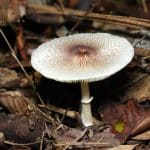
Leave a Reply